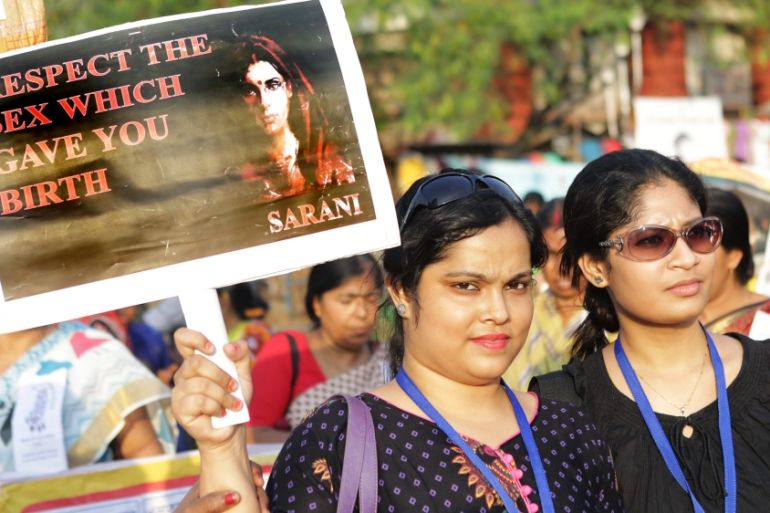Blog: Indian women worry dress will trigger harassment
Some Indian women say they avoid wearing ‘provocative’ clothes to prevent attracting unwanted attention.

It’s a question women the world over struggle with: “What should I wear?”
I recently thought about this question as I prepared to go to dinner on a humid and uncomfortably hot summer evening.
Keep reading
list of 4 itemsEurope pledges to boost aid to Sudan on unwelcome war anniversary
Birth, death, escape: Three women’s struggle through Sudan’s war
Does Israel twist humanitarian law to justify Gaza carnage?
While I arrived at a presentable answer, the question triggered a wider debate between my dinner company and myself.
In liberal, progressive, aspiring India, it seems most women engage in a process of wardrobe self-censorship; we ban certain items from our wardrobe, relegate them to the ‘overseas holiday shelf’ or banish them altogether.
We do this, as my dinner company and I agreed, not because of seasonal requirements or trends, but our own paranoia about personal safety.
There are a number of perennial questions we consider. For instance, if I wear a low-cut shirt, will I be inviting unnecessary, vicious stares from passersby? Or will I be seen as promiscuous if I don a skirt with what some would consider a risky hemline or a higher than conservatively fathomable slit?
RELATED: India women activists remind Modi of promises
Worse still, will some men, or even boys, take my attire choice as an open invitation to invade my personal space, touch me, or hurt me? Yes, this happens day or night, in public spaces, and in clear view for all to see.
Most people here agree that while India is itching to be seen as, and truly become, a modern, free-thinking country, it’s held back by a dangerously conservative undercurrent. I say this considering that in some places village leaders hold women responsible for sexual violence against them, saying that they invite trouble because of their decision to wear jeans and use mobile phones. Some victims of rape have been questioned not about the crime committed against them, but about why they were out in public alone and dressed the way they were.
Despite changes to rape laws and numerous government and community awareness programs initiated after the gang rape of a woman on a bus in New Delhi in 2012, little has changed on the ground when it comes to the perceptions and treatment of women.
Emergency scarf
Given this lack of progress, leading and sustaining change inevitably falls to women with a can-do attitude, from urban centres to remote villages. Their message is: I’m not the one with the problem, it’s you!
The friend I dined with recently is one of these can-do women. She is doing her bit to change perceptions, one outfit at a time. Walking to our destination, she knew her plunging halter neckline would create a stir, but her rationale is simple: Change starts with me.
She’s right to point out that it’s women in positions of relative social and economic power, mostly in big cities like New Delhi, who can stop the wardrobe censorship and turn the tables on women’s rights. It’s not about putting yourself on display or drawing undue attention, it’s about dressing and acting with the choice and confidence that what you wear is not, and should not, be inextricably linked to personal safety.
With generations of decay and patriarchy to work through, my friend admits she keeps a ‘modesty scarf’ in her handbag ‘in case of emergencies’. But she shouldn’t have to. None of us should. And many progressive Indians will agree, it’s about time we threw them out and embraced our wardrobes for what they are.